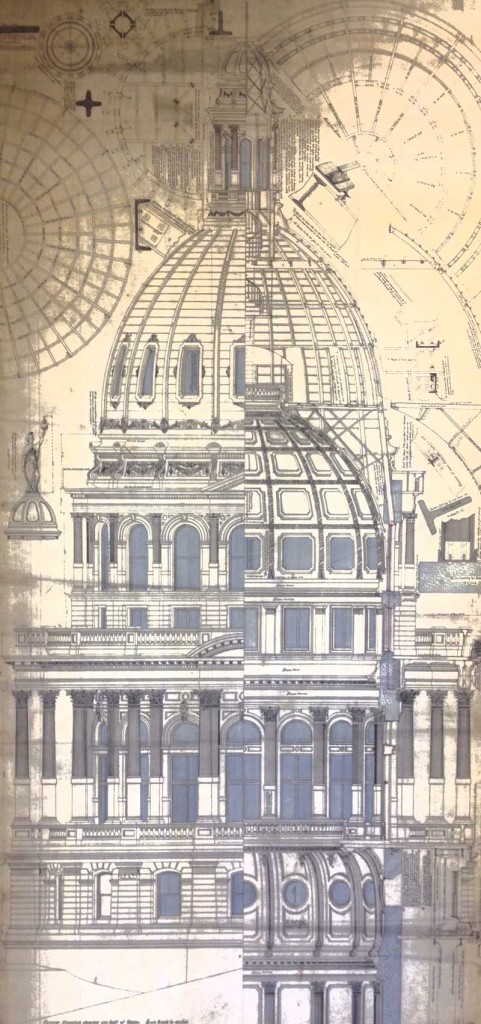
“The purification of politics is an iridescent dream. Government is force.”
— Sen. John James Ingalls, R-Kan. (1890)
The force these days is all executive orders and regulatory fiats issued by federal agencies. Congress is growing irrelevant and impotent. Nevertheless Colorado’s dreamers and purifiers want to overhaul the election process.
An ad hoc coalition of former lawmakers is proposing that future congressional districts be drawn up by nonpartisan legislative staffers and approved by an independent commission instead of by the General Assembly. They argue that will eliminate “gerrymandering” and provide more competitive districts.
The same commission would also take over legislative reapportionment, which has been handled by a separate group established by voters in 1974.
Supporters of the proposal include Republicans like former Gov. Bill Owens, former Speaker Frank McNulty and former Senate Majority Leaders Norma Anderson and Mark Hillman. The Democrats are also all “formers”: Gov. Dick Lamm, Speaker Mark Ferrandino and Secretary of State Bernie Buescher.
The new commission would be composed of four Republicans, four Democrats and four unaffiliateds.
The eight partisan members would be chosen by the majority and minority leaders in each legislative chamber. They in turn would select the unaffiliateds “by consensus” — and they must have been unaffiliated for at least a year.
This is to forestall, or at least make more difficult, another Gene Nichol fiasco. Nichol was the dean of the University of Colorado law school in the summer of 1991 when he was named to the Reapportionment Commission by Chief Justice Luis Rovira as one of the unaffiliated members,
It turned out Nichol had switched his registration from Democratic to unaffiliated just two months earlier. After he helped the Democrats control the reapportionment commission he re-registered as a Democrat in 1993 and ran (unsuccessfully) for the U.S. Senate nomination in 1996 and for Congress from the 2nd District in 1998.
Legislative leaders have four picks on the current 11-member reapportionment commission, the governor has three and the chief justice four. Since the supreme court has to rule on the legitimacy of the final plan it is clearly improper for the chief justice to pick its members as well, and the new commission would eliminate that role.
The U.S. Constitution doesn’t specify how congressional districts are to be drawn. Most states use the legislature but 21 employ some form of commission to draw the lines. The Colorado proposal most resembles the Iowa system, said spokesman James Mejia, a former Denver school board member.
A supermajority of eight votes would be required to approve a plan “so no single political party can hijack the map-drawing process,” said Mejia.
In Iowa the legislative staffers who draw the lines aren’t even allowed to consider the home addresses of incumbents. The Colorado proposal is silent on that subject and it’s hard to imagine staffers not sneaking a peak to make sure two popular lawmakers aren’t thrown into the same district.
“No system is foolproof but this is the one we thought was best,” said Mejia.
This isn’t the first time a congressional redistricting commission has been proposed. In 2005 Senate Majority Leader Ken Gordon, D-Denver, and Hillman, then Senate minority leader, cosponsored SCR-9, which would have asked the voters to approve a joint redistricting and reapportionment commission. It died aborning. “For whatever reason we couldn’t convince [Senate President] Joan Fitz-Gerald to let it out of the State Affairs Committee,” Hillman recalled last week.
Historically, the legislature hasn’t done a good job at drawing new political lines, especially when control is divided. The process is either too long or too short. In 1972 the legislature spent 90 of its 150 days (no 120-day limit then) on the matter, mostly in closed caucuses (no Sunshine Law then, either). This time-wasting stalemate prompted the overwhelming voter approval in 1974 of the reapportionment body.
Then in 2003 Senate President John Andrews, R-Centennial, in conjunction with the House GOP majority, managed to ram through a surprise congressional redistricting plan in the last three days of the session.
Problem was, a judge had already created new districts for the 2002 election after the divided legislature missed its deadline for doing so. The Democrats sued and the state supreme court reinstated the judge-drawn map in December 2003. You get only one shot per decade, it said.
The irony of the Andrews power play was that in the 2002 election the Republicans had won five of the seven congressional districts.
Mejia said the proposal is not final and if “tweaks” are proposed, “we’re all ears.” But the proposal must pass legislative council review and title board setting fairly soon if the proponents are to collect the 98,492 valid signatures required to get it on the 2016 ballot.
The other major hazard: A challenge by opponents (none have surfaced to date) on grounds the proposal includes more than a single subject. The state high court decides that issue — and if it likes the proposal, it will survive.
Voters are likely to approve it, just as they did the original reapportionment commission. It will take effect after the 2020 census in time for the 2022 elections — presuming voters still care enough about U.S. representatives to vote for them.
Longtime Rocky Mountain News political columnist Peter Blake now writes twice a month for CompleteColorado.com. Contact him at pblake0705@comcast.net You may re-publish his work at no charge and without further permission; please give full credit to Peter Blake and www.CompleteColorado.com.


